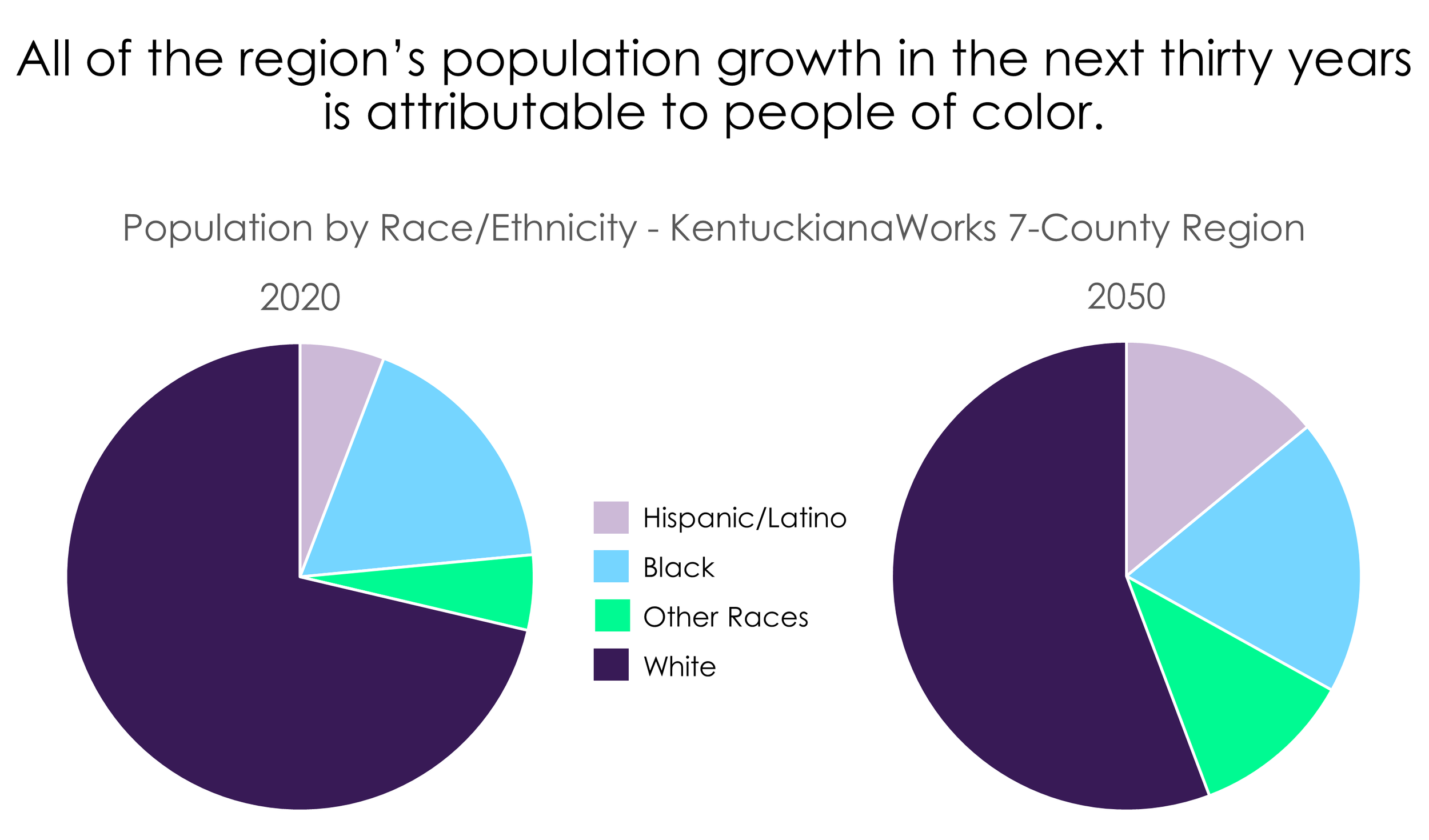New projections show a growing, diverse population in the region
The size of the region’s population and changing demographic patterns are important metrics for the local economy. The overall size of the region’s workforce and its demographic makeup are driven by the patterns across the total population.
New data on projected population growth over the next thirty years has been released from the Kentucky State Data Center at the University of Louisville. The outlook incorporates the results from the 2020 Census as well as recent (pre-pandemic) trends in fertility, mortality, and migration
Among the state’s 10 workforce investment boards (WIBs), the KentuckianaWorks region is projected to remain the most populous in 2050, with nearly 1.15 million people. It is projected to have the second highest numeric gain in population over the next thirty years, behind the Bluegrass WIB, gaining almost 123,000 people. This 12% projected growth is the third fastest among WIBs, behind South Central and Bluegrass.
Some of the counties with the fastest projected growth across the state are in the KentuckianaWorks region. Oldham and Shelby counties are projected to grow the third and fourth fastest in percentage terms, respectively, among all 120 counties. Spencer and Bullitt counties rank in the top 20 fastest growing counties, at 8 and 16, respectively. Jefferson County is projected to gain the third largest number of people, and remain the most populous county in the state.
The KentuckianaWorks region is projected to become more racially and ethnically diverse. All of the region’s population growth in the next thirty years is attributable to people of color, as the number of non-Hispanic/Latino white people is projected to decline by more than 90,000, a 12% decline. Meanwhile, the Hispanic/Latino population is projected to grow the fastest, more than doubling in size.
The region is already experiencing an aging workforce, as the Baby Boomer generation ages into retirement. This pattern is projected to continue in part because of lower fertility rates in the region. The population age 55 and older is projected to grow faster than adults in their prime-working-years (25 to 54) as well as children and young adults under age 25.
Employers planning for the future should consider the insights from these population projections. The size of the labor force will likely continue growing as the underlying total population grows, but the demographic composition of the workforce will likely change. Employers who are willing and able to engage with people of color and older workers are more likely to attract and retain future workers.



